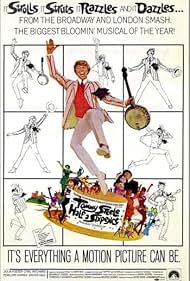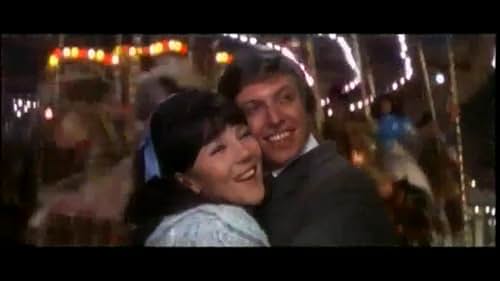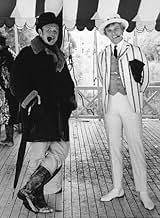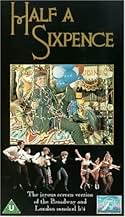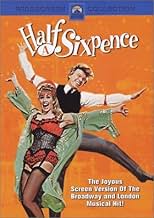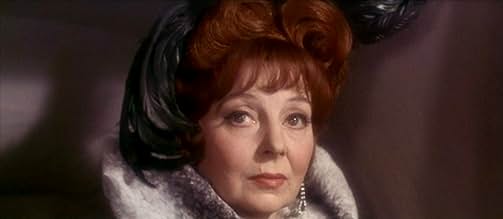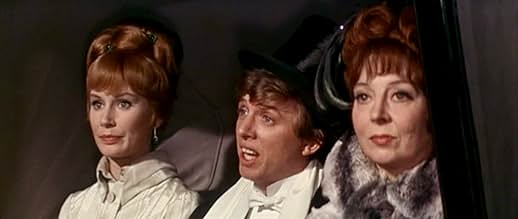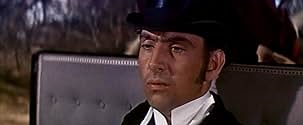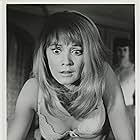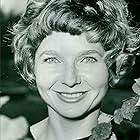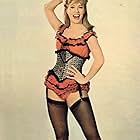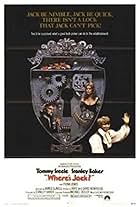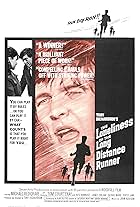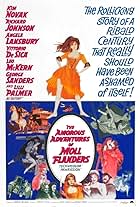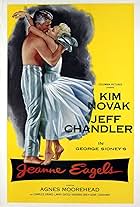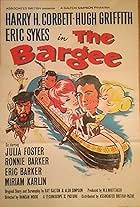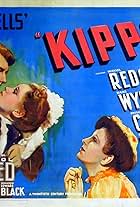Arthur Kipps, an orphan apprenticed to a tyrannical owner of a mercantile, has a sudden abrupt change of life when his wealthy grandfather dies and leaves him a pile of money.Arthur Kipps, an orphan apprenticed to a tyrannical owner of a mercantile, has a sudden abrupt change of life when his wealthy grandfather dies and leaves him a pile of money.Arthur Kipps, an orphan apprenticed to a tyrannical owner of a mercantile, has a sudden abrupt change of life when his wealthy grandfather dies and leaves him a pile of money.
- Nominated for 1 BAFTA Award
- 2 nominations total
Storyline
Did you know
- TriviaAfter the critical and commercial failure of the film, director George Sidney retired from directing at the age of only 51.
- GoofsIn the song, "Money to Burn", where Kipps (Tommy Steele) is playing the banjo, it's obvious that he's simply playing along to an audio track. But the sound begins several times before he does the strumming to make it happen. This should have been watched/caught in the editing process.
- Quotes
Harry Chitterlow: Don't forget old Harry. For £100, I'll let you have a quarter share of my new play.
Arthur Kipps: A quarter share? I'll take half!
Harry Chitterlow: Spoken like a gent!
- ConnectionsFeatured in The 100 Greatest Musicals (2003)
Featured review
Half A Sixpence is a musical adapted from the H.G. Wells story Kipps which Michael Redgrave played the title role back in a 1941 film version. I'm sure his interpretation of the role differed quite a bit from the boisterous styling of Tommy Steele in this film. They're so different in personality types.
It wasn't Wells the interpreter of the scientific future who wrote Kipps, but rather the Wells who was the Fabian Socialist. In a way this should be seen back to back with Pygmalion or My Fair Lady if you will. Some of the same themes were also done American style in The Unsinkable Molly Brown.
George Bernard Shaw when he wrote Pygmalion did the exact reverse of what Wells did in Kipps. That other noted Fabian Socialist took the flower girl Eliza and had her schooled in manners by the overbearing Henry Higgins to improve her station. Her economic status doesn't improve any, unless you figure she might marry well like the Freddy Eynsford-Hill character. She speaks well enough to fit in with his crowd.
But the exact opposite happens to Arthur Kipps. He's of illegitimate birth, apprenticed as a draper's assistant and living in the basement of his employer's store with other apprentices. But one fine day, Arthur's ship comes in, a grandfather leaves him an inheritance and a guaranteed annual income.
But unlike Audrey Hepburn, Tommy Steele is still at heart from the lower classes. So the story of Half A Sixpence is his personal struggle to find his place. That could be with a girl of his own class, Julia Foster or the previous unattainable Penelope Horner. Give you one guess where Steele winds up.
Half A Sixpence ran on Broadway for 511 performances in the 1965-66 season with Tommy Steele in the title role there. Steele's infectious style of performing is awfully hard to resist. Though he started out as a rock and roll singer, a British answer to Elvis Presley, Steele is really from the great tradition of Music Hall performers in the United Kingdom.
The socialist polemics are kept to a minimum here, I can't speak for how Wells originally wrote Kipps or how Michael Redgrave played it back in the day. But his points do come across and come across most entertainingly.
It wasn't Wells the interpreter of the scientific future who wrote Kipps, but rather the Wells who was the Fabian Socialist. In a way this should be seen back to back with Pygmalion or My Fair Lady if you will. Some of the same themes were also done American style in The Unsinkable Molly Brown.
George Bernard Shaw when he wrote Pygmalion did the exact reverse of what Wells did in Kipps. That other noted Fabian Socialist took the flower girl Eliza and had her schooled in manners by the overbearing Henry Higgins to improve her station. Her economic status doesn't improve any, unless you figure she might marry well like the Freddy Eynsford-Hill character. She speaks well enough to fit in with his crowd.
But the exact opposite happens to Arthur Kipps. He's of illegitimate birth, apprenticed as a draper's assistant and living in the basement of his employer's store with other apprentices. But one fine day, Arthur's ship comes in, a grandfather leaves him an inheritance and a guaranteed annual income.
But unlike Audrey Hepburn, Tommy Steele is still at heart from the lower classes. So the story of Half A Sixpence is his personal struggle to find his place. That could be with a girl of his own class, Julia Foster or the previous unattainable Penelope Horner. Give you one guess where Steele winds up.
Half A Sixpence ran on Broadway for 511 performances in the 1965-66 season with Tommy Steele in the title role there. Steele's infectious style of performing is awfully hard to resist. Though he started out as a rock and roll singer, a British answer to Elvis Presley, Steele is really from the great tradition of Music Hall performers in the United Kingdom.
The socialist polemics are kept to a minimum here, I can't speak for how Wells originally wrote Kipps or how Michael Redgrave played it back in the day. But his points do come across and come across most entertainingly.
- bkoganbing
- Dec 10, 2008
- Permalink
- How long is Half a Sixpence?Powered by Alexa
Details
- Release date
- Country of origin
- Language
- Also known as
- Tatsız Miras
- Filming locations
- Aylesford, Kent, England, UK(village where Kipps grows up)
- Production company
- See more company credits at IMDbPro
- Runtime2 hours 23 minutes
- Aspect ratio
- 2.35 : 1
Contribute to this page
Suggest an edit or add missing content

